Richard Attenborough’s role as the elder statesman of British cinema has somewhat obscured his prolific, often brilliant work both in front and behind the screen, in a film-making career stretching back to the early 1940s.
After appearing in the wartime morale booster In Which We Serve, playing a sailor who deserts his post, and a memorable walk-on in A Matter of Life and Death, Attenborough was cast as Pinkie in the Boulting brothers adaptation of Graham Greene’s Brighton Rock.
Attenborough’s success as Pinkie saw him typecast as a spiv and hoodlum for the next few years, as he began to build his career as a leading man in the late 40s and early 50s. Dancing With Crime, released like Brighton Rock in 1947, saw Attenborough play a former soldier who gets entangled with black marketeers in postwar London. Subsequent jobs included films such as The Guinea Pig (working class kid wins scholarship to public school) and Boys in Brown (juvenile delinquent in postwar borstal).
In the mid-50s, Attenborough revealed an unlikely gift for comedy: the Boulting brothers’ National Service satire Private’s Progress, which showcased Ian Carmichael in the lead, also found room for Attenborough’s conniving Pte Cox alongside Terry Thomas, Dennis Price, William Hartnell, et al.
More comedies followed, including The Baby and the Battleship, Brothers in Law and I’m All Right Jack, interspersed with war movies such as Dunkirk, Sea of Sand and Danger Within. But Attenborough was clearly chafing at his actor-for-hire status, and decided to turn producer. Forming a company called Beaver Films with actor-writer Bryan Forbes, Attenborough used his clout to set up the issue-drama The Angry Silence. Attenborough himself played the lead, a man ostracised by his workmates after refusing to join a wildcat strike, in what is in effect a British answer to On the Waterfront.
His acting career subsequently took something of a back seat while his production duties increased (including Forbes’ directorial debut Whistle Down the Wind), but Attenborough’s status was kicked up a notch in 1963 when Hollywood came calling. The celebrated war movie The Great Escape cemented his position among Britain’s leading actors, even if Attenborough was behind Steve McQueen and James Garner on the billing.
Attenborough was now an established Hollywood player, and the mid-60s saw him inserted into films such as Flight of the Phoenix, where he plays Jimmy Stewart’s navigator in the crash-in-the-desert yarn, and The Sand Pebbles, as Steve McQueen’s shipboard pal Frenchy.
More importantly, though, Attenborough was gearing up for his own directorial debut. His partnership with Forbes had disintegrated after Seance on a Wet Afternoon in 1964, but in 1968 he pulled in all his contacts to mount a star-stuffed adaptation of Oh! What a Lovely War, Joan Littlewood’s first-world-war satire. Opinions differ to the extent of Attenborough’s success in overcoming its stagebound origins, but the final scene, a helicopter shot with thousands of wooden crosses, is still extraordinary.
Attenborough was now in the position where he could alternate directing and acting work. After a comic turn as Inspector Truscott in the adaptation of Joe Orton’s Loot, he performed a complete about turn and stunned audiences with a genuinely horrific portrayal of mass killer John Christie. With shaved pate and bottle-top glasses, Attenborough completely suppressed his trademark onscreen likability to turn in a performance of brutal creepiness.
Attenborough quickly dipped back into directing, setting up another historical piece: Young Winston, the story of Churchill’s early years. Perhaps mindful of the dangers of dual acting-directing roles, he opted out of playing Churchill’s father, Lord Randolph, as writer-producer Carl Foreman had originally wanted: instead, he cast Robert Shaw in the part. Young Winston was a more stolid, conventional affair than Oh What a Lovely War, but it set Attenborough on the path of the epic film-making in which he came to specialise.
In the 1970s, Attenborough settled down to playing the sort of grandee roles that an actor of his seniority and accomplishments could expect. He did the inevitable Agatha Christie, And Then There Were None, alongside Oliver Reed and a host of European heavyweights – presumably at the behest of the multinational group of financiers.
Another grandee role came Attenborough’s way shortly after - of a very different sort. Indian master director Satyajit Ray cast him as a Scottish army general in his fable The Chess Players, in which Ray explored the way in which local resistance to the British invaders was undermined by a dilettante ruling class.
Meanwhile, Attenborough embarked on his most ambitious directing job to date: A Bridge Too Far. Another epic treatment of British military history, this three-hour account of the abortive Arnhem raid in 1944 found room for a full squadron of film stars (Dirk Bogarde, Sean Connery, Robert Redford, Michael Caine and Laurence Olivier among them) and broached new frontiers of authenticity and large scale recreation. The raid’s less than triumphant outcome perhaps accounted for its lack of popularity in critics’ circles.
Attenborough “retired” from acting in 1978, after The Human Factor, to concentrate on getting a long-dreamed-of project off the ground. His biopic of Gandhi was even longer than A Bridge Too Far, but its gigantic scope was rewarded with eight Oscars at the 1983 awards, including one for Attenborough himself as best director.
Now firmly a director, Attenborough followed Gandhi with another 180-degree swerve: the film of Bob Fosse’s A Chorus Line. Much ridiculed at the time, Attenborough said later: “I loved it because I am a ham at heart and I was in love with every single one of the girls. I am proud of the film.”
Attenborough returned to social-issue subject matter with Cry Freedom, aiming to do for South African apartheid what Gandhi had done for the Indian independence movement. Denzel Washington played activist Steve Biko, and for him it was a breakthrough film role, resulting in an Oscar nomination for best supporting actor.
With his 1992 film Chaplin, Attenborough returned to performing arts, and gave another young actor a big break. Robert Downey Jr had excelled in teen movies such as Less Than Zero, but Chaplin was a grown-up role. Downey, it has been agreed, put in a superb performance, even if the resulting film was on the sprawling side.
After a 15-year break, Attenborough was tempted back in front of the camera by Steven Spielberg, to play the over-optimistic dino-attraction owner John Hammond in Jurassic Park. The film turned out to be a monster hit, as well as a groundbreaking example of CGI – and led to his regularly taking roles for other directors.
Attenborough reunited with arguably his favourite actor, Anthony Hopkins, for yet another biopic, that of CS Lewis, in Shadowlands. A nuanced, intelligent treatment of two intellectuals deeply-felt love for each other, Shadowlands was a natural award-winner, including the best British film Bafta.
Attenborough’s next two films as director were considered comparative disappointments. First came In Love and War, an account of Ernest Hemingway’s first world war love affair with an American nurse, which provided an early lead role for Sandra Bullock.
Attenborough followed it up with the unlikely Grey Owl, which told the story of fake Native American Archibald Belaney. The story was close to his heart, as he revealed in an article he wrote for the Guardian in 2000 – he and his brother David had met Grey Owl himself at a lecture in 1936.
After an eight year break, his final film proved to be second world war set Closing the Ring, which our critic Peter Bradshaw called “preposterous … but the story is socked over with earnest energy.”
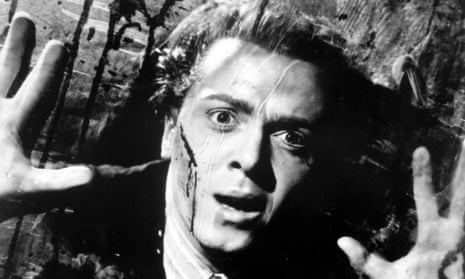
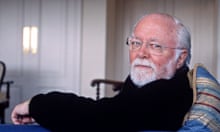
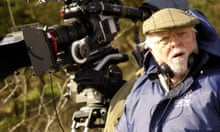
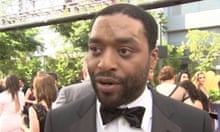

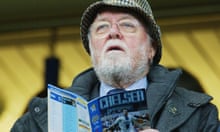
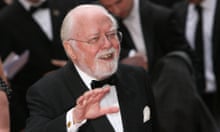

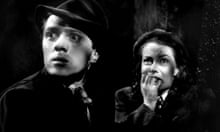


Comments (…)
Sign in or create your Guardian account to join the discussion